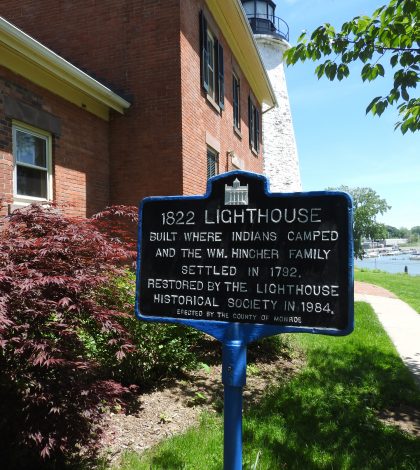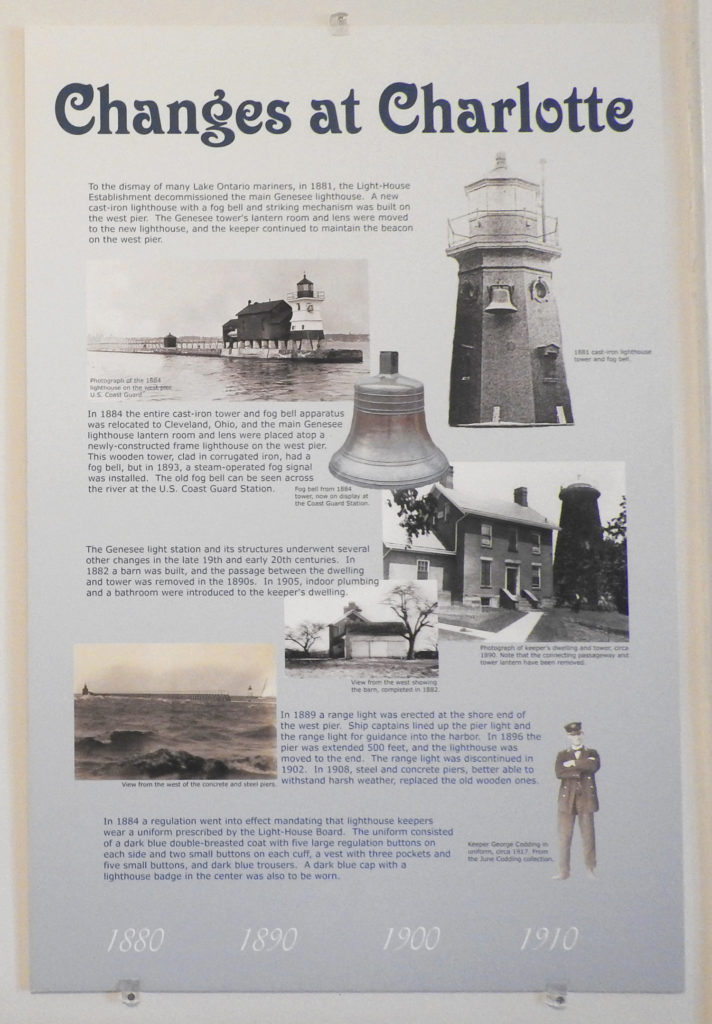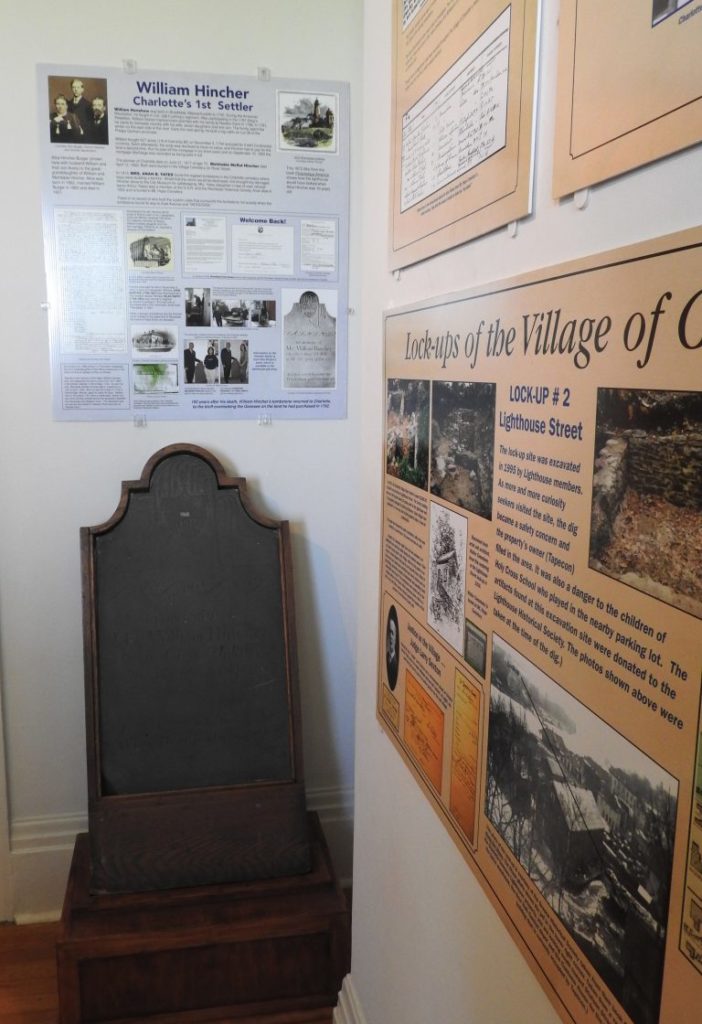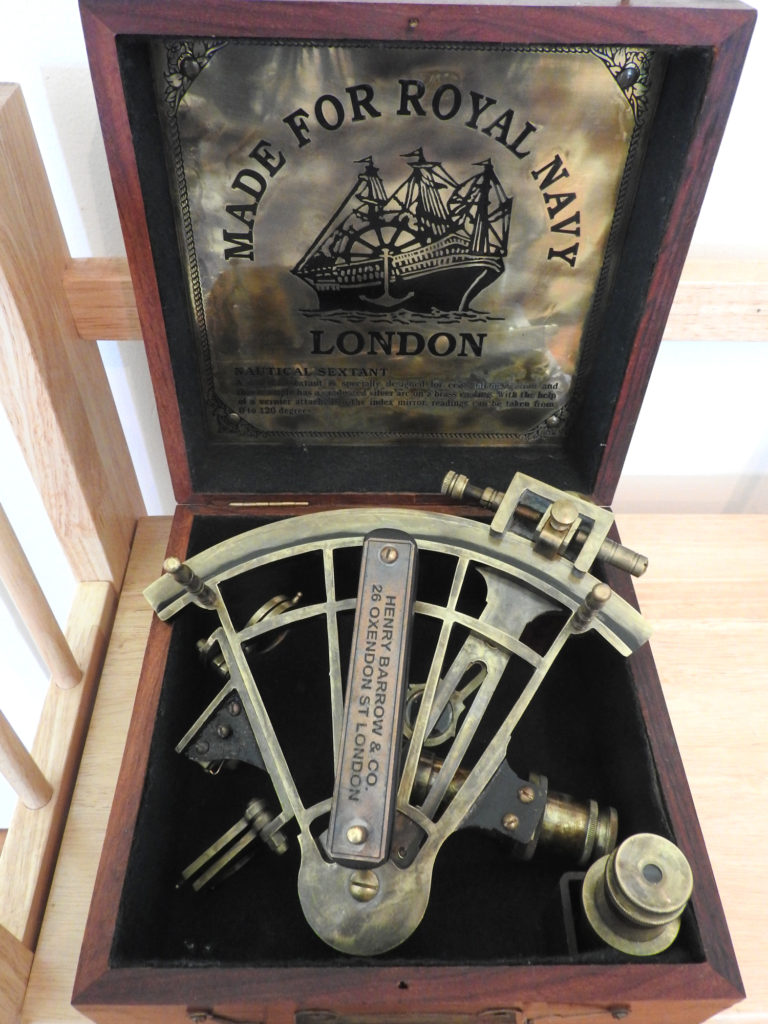Charlotte-Genesee Lighthouse
The Charlotte-Genesee Lighthouse Honored as a 2019 Top Landmark in Rochester

The Charlotte-Genesee Lighthouse was recently named one of the top three Best Landmarks in Rochester by the Three Best Rated® Organization. The other two locations are The Susan B. Anthony House on Madison Street in the City of Rochester and The Powers Building on West Main Street in Downtown Rochester.
The Charlotte-Genesee Lighthouse, a working Lighthouse, is located 70 Lighthouse Street, Rochester. It is an 1822 sandstone octagonal lighthouse in Charlotte on Lake Ontario at the mouth of the Genesee River. In 1863 a brick two story keeper’s dwelling was built adjacent to the tower. The Historical Marker at the Lighthouse reads: “1822 Lighthouse Built where Indians camped and the Wm. Hincher Family settled in 1792. Restored by the Lighthouse Historical Society in 1984.”
The Lighthouse is open to the public from April through October, on Friday, Saturday and Sunday from 1:00PM to 5:00PM with tours of the Keeper’s House museum building and Lighthouse tower available. The Keeper’s House museum building tour is of the 1st floor only, the second floor is a private residence and the basement is where the offices and archives are located. Special tours are available by request only.
The Lighthouse tower is 40 feet high and access to the top is achieved by climbing a spiral staircase, built in 1858, then climbing an 11 rung ladder and crawling through an opening in the ceiling to the 12 foot high lantern room. After the climb you are rewarded with breathtaking views of Lake Ontario, the Genesee River and Lake Ontario Park. The light in the tower is a Fresnel light.
Museum exhibits are located inside and outside the building. The museum’s new 2019 display is entitled “The Lock-Ups in the Village of Charlotte. What is a Lock-Up Compared to a Jail?” The Village of Charlotte went through three Lock-Ups over three years after the Village was created. Learn about these Lock-Ups and especially about Lock-Up #2 that was located on the northeast side of Lighthouse Street, just south of the Lighthouse. This Lock-Up was condemned and closed in 1914. In 1995 Lighthouse members excavated the area of Lock-Up #2 and the results of the find are included in the display.
A second exhibit for the 2019 season is entitled Saving Lives on Lake Ontario… The Government Agencies of Charlotte. The Agencies are The U.S. Lighthouse Service, U.S. Revenue Cutter Service, U.S. Life Saving Service and the U.S. Coast Guard Service.
The museum is filled with interesting facts and artifacts all relating to the History of Charlotte and the area. Included are early maritime equipment and tools, cannonballs excavated on site from the War of 1812, information on 1879 Charlotte businesswoman Julia Roberts, known as The Iron Lady, the history of the first two ferryboats in Charlotte, Ontario 1 (1907) and Ontario 2 (1915), information on Ontario Beach Park and the nine area hotels and many attractions that thrived in the Charlotte area when it was at the height of its popularity as a resort destination. There are also many built to scale models of Charlotte landmarks. A most interesting artifact in the museum is the original grave marker of William Hincher, the owner and settler of the land that the Lighthouse is built on. He died on June 21, 1817 at 76 years of age. The inscription on his grave marker reads, “Death is a debt by nature due which I have paid and so must you.”
Our tour of the Keeper’s House Museum and the Lighthouse Tower was hosted by Fred Amato, President of the Charlotte-Genesee Lighthouse and Jack Kemp, Vice President and Historian of the Charlotte-Genesee Lighthouse, who shared their extensive knowledge, interesting facts and observations all throughout the tour.
For more information on the Charlotte-Genesee Lighthouse visit www.geneseelighthouse.org.
Photos by Karen Fien





















